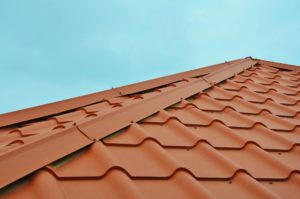If you’re choosing a brand new roof for your home, aesthetics are essential. But so will the substance’s cost, weight reduction, and installation requirements. The layout is a significant variable, but it isn’t the only one. Item cost, material weight, and installation requirements should also influence your selection. With these tips from impressiveinteriordesign.com, here are some of the few things that you need to know.
Cost of New Roof
 The cost of a roof depends on several factors. The price of the material is the starting level, and you must consider other factors as well. One is the current roof condition when a home is being renovated: when outdated materials need to be removed and the supporting structure needs to be repaired. The type of roof is another factor. A gabled roof without plain breaks (such as chimneys, vent pipes, or dormers) is an easy roofing job. A house with chimneys, valley rooflines, skylights, and turrets will cost significantly more to roof.
The cost of a roof depends on several factors. The price of the material is the starting level, and you must consider other factors as well. One is the current roof condition when a home is being renovated: when outdated materials need to be removed and the supporting structure needs to be repaired. The type of roof is another factor. A gabled roof without plain breaks (such as chimneys, vent pipes, or dormers) is an easy roofing job. A house with chimneys, valley rooflines, skylights, and turrets will cost significantly more to roof.
Roofing Materials
You cannot use all roofing materials on every roof. A flat roof or a low slope may demand a surface different from one with a steeper pitch. Materials like slate and tile are hefty, so many homes’ structure is inadequate to carry the load. Consider the following options, then talk with your contractor and get estimates for the job.
Slate. Slate is one of the most durable roofing materials. Not all slate is the same – some come from Vermont quarries, others from Pennsylvania and elsewhere – but the top is likely to last longer than the fasteners that hold it in place. 100-year-old slate is often poisonous to a new installation, with the expectation that it will last another century. But slate is expensive – it usually starts at about $800 per square – and very bulky.
Wood. Wood has been the primary alternative for centuries and remains a great option, although fire codes prohibit its use in some areas. Usually, of cedar, redwood, or southern pine, the shingles used are sawn or split. Wood has a life expectancy of 25-year range but costs an average of twice as much.
Asphalt. It is the most common roofing material, probably because it is the least expensive and requires minimal installation skills. It consists of a fiberglass medium impregnated with asphalt and covered with a layer of sand-like granules. There are two standard configurations: the standard, one-dimensional option and thicker laminated products. The traditional type costs about half as much, but laminated shingles look attractive and last about half as long (typically 25 years or more, instead of 15 decades). Prices start at about $50 per square foot per year but can cost many times more depending on the shingles and installation style.
Metal. Aluminum, steel, copper/asphalt, and labor are durable – and expensive – roofing surfaces. Lead forms and copper/asphalt are often installed as shingles, but others are fabricated for vertical seam roofs that contain lengths of metal welded together. These roofs start at about $250 per square but usually cost two or three times as much.
Installation Notes
Regardless of your choice of roofing, you will likely need flashing. Flashings are an essential part of all exterior work, whether on the siding or the roof. It is applied in strips to areas where dissimilar materials adjoin. Depending on the roofing materials’ choice, the coursing should be regular to the eye and parallel to roof edges. From one course to the next, the joints should be staggered from section to section to reduce leaks. Don’t choose a contractor who relies on tar for joints. Except for certain roofs where a membrane is used, tar is not an ideal expedient that should be used for a new roofing surface.


